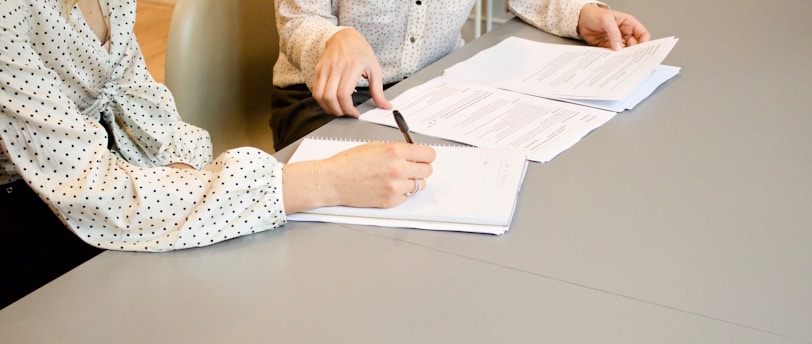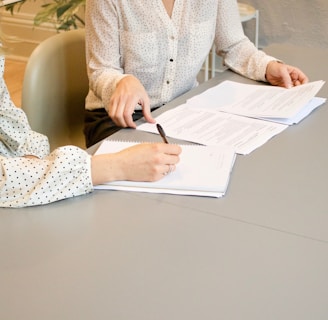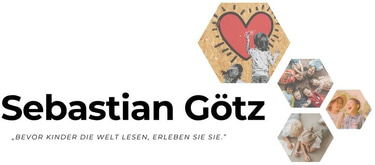Free observation daycare centre: The most important tool for educators
Use unstructured observation correctly. Learn the basics, implementation and non-judgemental documentation for your internship and everyday daycare centre life.
MANAGEMENT(EN)


Free observation, also known as unstructured observation, is a fundamental tool in the everyday work of nursery school teachers. In contrast to structured observations, which focus on specific behaviours or situations, free observation is more open and flexible. It allows children to be observed in their natural environment and in spontaneous situations, without any predefined criteria. It is essential for prospective educators to understand and effectively apply this method in order to gain a comprehensive picture of each child and to support their individual development in the best possible way.
What is free observation?
Free observation involves attentively accompanying children as they play, interact with other children or adults, and in everyday situations. There are no checklists or observation sheets to work through. Instead, you let yourself be guided by what the children are doing and how they are behaving. The goal is to gather impressions as impartially as possible and then reflect on them. It is a kind of ‘going with the flow’ in observation, where one is open to everything that happens – like a detective gathering clues without knowing what the outcome will be.
Why is free observation important?
Free observation is an indispensable tool in educational work, as it offers a number of key advantages. First, it provides a holistic picture of the child by going beyond superficial impressions and comprehensively capturing their strengths, interests, challenges and needs. For example, it allows you to identify their favourite games, how they deal with conflicts, the social roles they assume and any special talents they may have. The aim is to understand the child's entire personality, not just individual aspects. Another advantage is the early recognition of individual developmental stages. Precise observation allows progress in language development or motor skills to be recorded, which might have been overlooked in purely structural observation. This makes it possible to identify developmental risks at an early stage and, if necessary, initiate appropriate support.
Based on these findings, needs-oriented programmes can be developed. If, for example, a strong interest in building is observed in many children, materials and stimuli in this area can be offered in a targeted manner or corresponding projects can be initiated. This ensures that educational programmes are optimally tailored to the current needs and interests of the children.
Furthermore, free observation forms an important basis for parent-teacher conferences. Concrete, non-judgmental examples of developmental steps or behaviours make communication with parents more transparent, comprehensible and constructive. This creates trust and promotes cooperation based on partnership. Finally, observing children in different situations also allows for reflection on one's own educational role. It helps to review one's own actions and reactions to certain behaviours and to consider how children's play can be better supported without dominating. Free observation thus contributes significantly to the review and further development of one's own professional attitude.
Correct implementation of free observation
Implementing free observation requires practice and a conscious attitude in order to fully exploit its advantages. First of all, the right attitude is crucial: one should adopt a curious and open-minded approach, set aside one's own expectations, prejudices or quick judgements, and engage fully with the child. The child is the focus of attention while one listens and observes attentively. Furthermore, it is important to take time and create space. Free observation cannot simply be done ‘on the side’. Time should be consciously set aside to retreat and observe without directly intervening in what is happening. This can be done during free play, at mealtimes, in the morning circle or on the playground. A fixed observation point that offers a good overview can be helpful.
A key element is to remain passive and not intervene. During observation, you should remain as passive as possible and not intervene immediately when minor conflicts arise or a child is having difficulties. Children often solve their problems themselves or develop new strategies that you would not otherwise be able to observe. Of course, tact and sensitivity are required here; exceptions apply if there is imminent danger or the child clearly signals that they need support.
It is also essential to focus on the child. Concentrate on one or a few children at a time so as not to dilute your observations. Pay attention to facial expressions, gestures, posture, verbal and non-verbal communication. How does the child move? What does their voice sound like? What does their gaze express? Even if there are no fixed forms, it is helpful to make initial notes. During or immediately after the observation, short keywords, small sketches or verbatim quotes can be used to record what you have seen. It is important to formulate the notes without judgement. Describe what you see and hear, not what you interpret. An example of this would be: instead of ‘Max is aggressive’, you should note: ‘Max snatched the toy out of the child's hand and shouted “Mine!”’.
Regularity is crucial for a clear and differentiated picture of child development. Integrate free observation into the daily routine at the nursery. Changes can only be noticed through regular observation over a longer period of time.
The deeper meaning of this practical task is that students develop the ability to perceive children holistically and specifically. They learn to interpret the impressions they have gathered professionally in order to identify the individual interests and development potential of each child.
Finally, reflection and exchange after observation is of great importance. Consider: What did you see? What does this mean for the child? What questions does this raise for you? How can you support the child based on your observations? Also discuss your observations with colleagues. Four eyes often see more than two, and different perspectives can be very enriching. This can take place in team meetings or during supervision sessions.
Proper documentation of free observation
There are a few key points to keep in mind for proper documentation of free observation. The documentation serves to record the impressions gathered, make them comprehensible and use them as a basis for further educational steps. Structured documentation helps you keep track of things and use your observations professionally.
Basic data of the observation
Date and time: Always record exactly when the observation took place and how long it lasted (e.g. ‘21 May 2025, 10:15 – 10:30’).
Location of the observation: Note where the observation took place (e.g. ‘building corner’, ‘garden, sandpit’, ‘dining area’). The room can influence behaviour.
People involved: Who else was involved in the situation? Other children (if possible with names), adults, which ones exactly? What was their role?
Description of the event (non-judgmental!)
This is the core of the documentation. Describe precisely and objectively what you saw and heard without interpreting or evaluating it. Stick to the facts.
Example (bad – interpretation): ‘Anna is shy and plays alone.’
Example (good – description): ‘Anna sat alone in the reading area and leafed through a picture book. She glanced several times at the group of children playing in the building area, but did not go over to them. Her posture was slightly bent forward, her gaze directed at the floor.’
Pay attention to details: What words were used? What were the facial expressions like? What gestures and body movements were made?
Direct quotes can be very meaningful and bring the situation to life: (‘I can't do this!’ Tim muttered quietly as the tower he had built collapsed. He looked at the floor in frustration.)
Your own questions/hypotheses
Your observations may raise questions. You can record these here. They serve as a starting point for further observations or discussions. (e.g. ‘Why does Max always avoid the building blocks? Is he not interested or does he have motor difficulties?’, ‘Does Lena show the same perseverance and concentration in other situations?’)
Educational conclusions/next steps
This is the most important part for your further work. What do the observations mean for the individual support and guidance of the child?
What needs of the child became apparent (e.g. for security, autonomy, belonging, recognition)?
What strengths of the child have you identified that you would like to encourage or build on?
Are there any abnormalities that require further observation or could give rise to a discussion with the parents?
What materials or stimuli could you offer to support the child in their development?
What changes in the room, in the daily routine or in your own interaction could be helpful?
Example: ‘Anna needs more support in establishing contact with other children. Next week, I will specifically invite her to participate in a cooperative game with two other children and positively reinforce her first interactions.’
Date of documentation and signature
This is important for traceability and accountability.
Formats for documentation
There are no fixed guidelines for documenting free observation. You can use a simple notebook, digital text documents (e.g. Word, OneNote), or even specially designed observation sheets, which should leave enough space for free notes. Some nurseries also use digital portfolio systems. It is important that the documentation is clear, easy to find and usable for you and, if applicable, your team, and that data protection regulations are complied with. Observations must always be treated as confidential!
Frequent practical task during teacher training
In teacher training, the task of free observation usually takes place in connection with the first practical visit. You must therefore carry out three free observations and use these to plan a suitable activity/free play impulse. The task usually sounds like this:
As part of your practical phase, please carry out three free observations, each lasting 3 to 5 minutes. Concentrate on the same child, but in different situations (e.g. during free play, in the garden, in the gym or at the painting table). Choose moments when the child appears concentrated and engaged. Please create a detailed report for each observation.
Follow-up (at home): Transfer your handwritten reports to your computer and add the column for interpretations.
Submission: Send the three completed observation reports by 21 May 2021 at the latest (or at least one week before your practical visit) as a PDF document by email. This task serves as proof of performance in BHF.
Important note: Forward the reports along with your written preparation for the practice visit to your practice teacher.
Tips and helpful information
There are a few helpful tips and important pieces of information to keep in mind for successful free observation. First, it is crucial to assume the role of the ‘invisible’ observer. Try to behave as inconspicuously as possible, as children often change their natural behaviour when they notice that they are being closely observed. Find a place from which you can see well without being at the centre of the action or staring directly. The edges of the room are often well suited for this.
Furthermore, it is important to always consider the context of the behaviour being observed. Every behaviour takes place within a specific framework. Was the child tired, hungry or excited at the time? Had there been an argument with another child or had the child just been praised? Had an unusual situation occurred at nursery or at home? The context helps you to better understand the behaviour and not to judge it too hastily.
Another important aspect is the conscious perception of positive behaviours and resources. It is easy to focus on ‘problematic’ or ‘conspicuous’ behaviours. However, practise consciously perceiving and recording the strengths, interests, talents and positive interactions of the children. This strengthens the children's skills and gives you valuable starting points for positive reinforcement. To ensure focused observation, you should avoid distractions. Turn your mobile phone to silent and resist the temptation to be distracted by other things while observing. Concentrate fully on what is happening.
Finally, good observation requires patience. Children develop at their own pace, and sometimes the progress is small and subtle. The ability to notice even minor changes is essential for precise observation.
Summary and conclusion
In summary, free observation is much more than just a mandatory task. For prospective educators, it is the basis for a deep and authentic understanding of the children they work with. It not only trains one's own perception and professionalism, but also enables one to accompany each child individually in their development and offer appropriate support. Those who master this method lay the foundation for reflective and high-quality educational practice.
Take the opportunity to consciously integrate free observation into your training and later professional life – it will become one of your most valuable tools!
